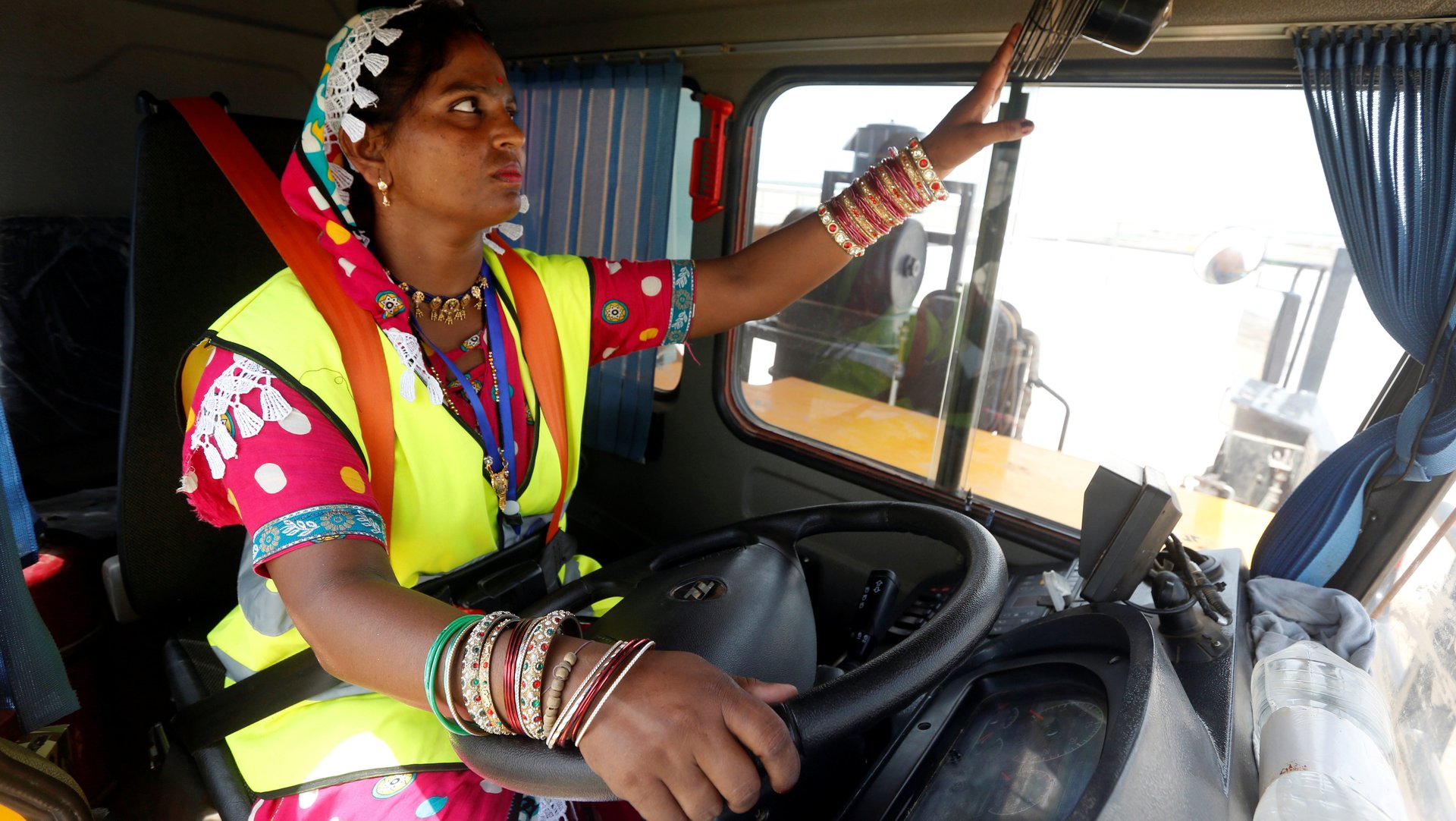Can women fix punctures? You must be kidding
After years of battling amused stares and plain bias, Indian women have begun to come on their own behind the wheels. Yet, rampant sexism is clearly thriving, particularly when industry veterans themselves seem to harbour wrong notions.


After years of battling amused stares and plain bias, Indian women have begun to come on their own behind the wheels. Yet, rampant sexism is clearly thriving, particularly when industry veterans themselves seem to harbour wrong notions.
For instance, Rajiv Prasad, JK Tyre India president, thinks the biggest problem faced by female drivers is changing a punctured tyre, as they are “not made” for the task.
“We have a lot of ladies who are driving all sorts of vehicles including trucks…What is it that would be most painful for them? A puncture,” Prasad said in a recent interaction with Quartz in New Delhi. “There are certain things which men and women are made for. Physical strength lies with men… you (women) would not like a puncture to happen, hence we created a product which is completely puncture-proof.”
He made this observation while explaining the importance of his company’s new product.
It wouldn’t be surprising if Prasad hasn’t heard of Shanti Devi, one of India’s few female truck mechanics. If he had, then he would know that for women like Devi, physical strength or automobile mechanics is not the biggest challenge—it is rampant sexism and unsafe working conditions.
“My relatives had asked me to leave my work because according to them, it’s a man’s job and women are not supposed to repair trucks or automotive vehicles,” Devi had said in 2016. She changes tyres weighing 60-80 kilograms and repairs puncture for at least 15 trucks a day at her workshop in New Delhi.
Another such mechanic, in the western Indian city of Pune, didn’t let all that prejudice stop her either. “No one believed that I could repair autos as proficiently as my father,” 47-year-old Deepali Dharmadhikari told TheBetterIndia recently.
There are more examples.
Yogita Raghuvanshi, a single mother of two in Bhopal, Madhya Pradesh, for instance, has been a truck driver for 15 years. Asia’s first woman bus driver, M Vasanthakumari or Jothimani Gowthaman, a truck driver—both in Tamil Nadu—have suffered more due to patriarchy than a lack of physical strength.
Of late, the Karnataka State Road Transport Corporation has witnessed a rise in the number of female mechanics in its technical division.
Female taxi drivers, too, are on the rise—again, despite the bias.
“I had to put up with an uncomfortable culture and discrimination from male colleagues. I felt it was part and parcel of the job but, everything put together, I had had enough and decided to quit. Besides, I wanted to do so much more with my life that a rigid job would not permit,” Noor Jahan, a former cabbie who shifted to driving Ola autorickshaws in Karnataka, told YourStory.
For all these sturdy women, road safety is evidently a bigger concern than a mere puncture.
The road ahead
Globally, the share of women driving trucks is small. In the US, they account for a meagre 6% of the total.
In India, they face difficult work conditions—something the men face, too. “Around 53% of drivers suffer from some health issues, while 23% battle lack of sleep and about 18% face physical stress and 12% mental stress,” according to a study conducted by Mumbai-based market research firm Kantar IMRB last year.
Clearly, better working conditions are the need of the hour—besides, weeding out sexism, that is.